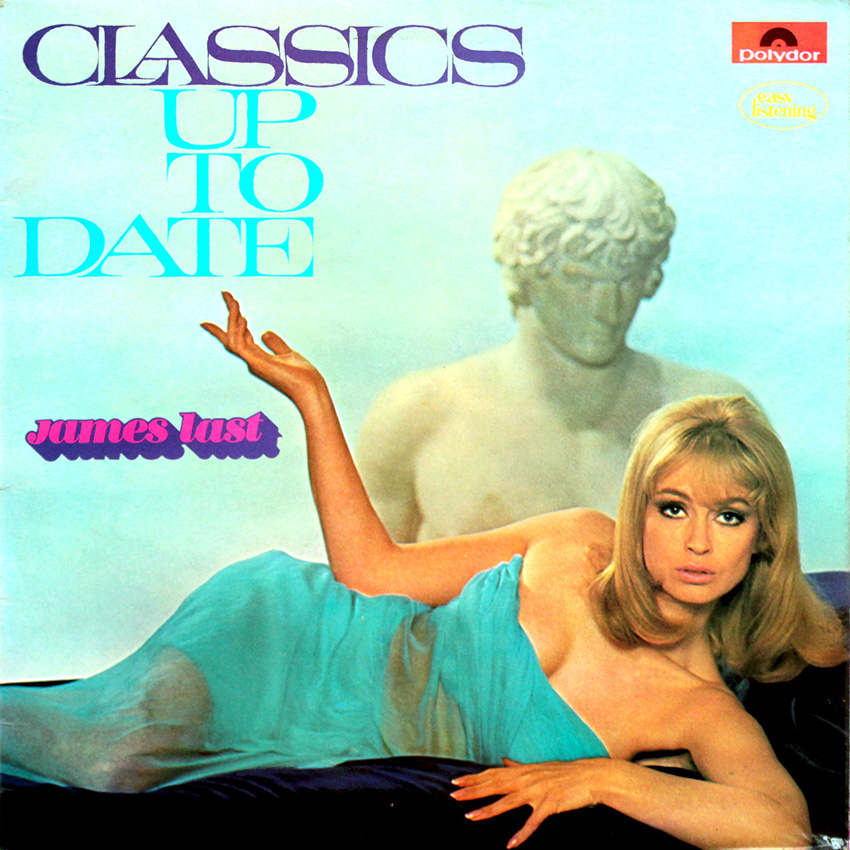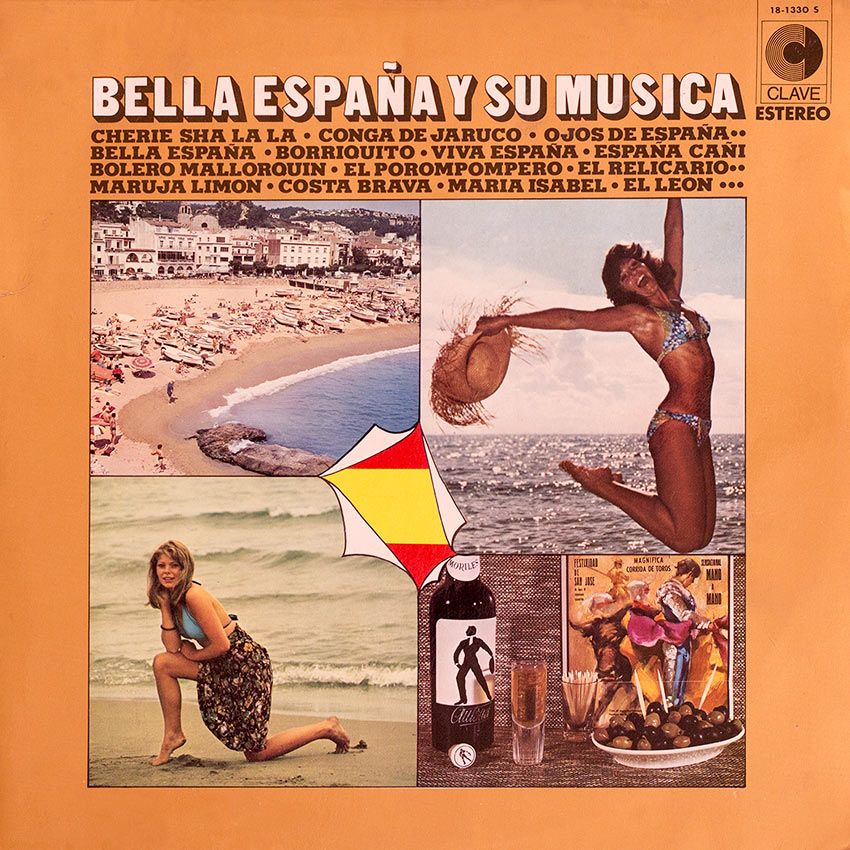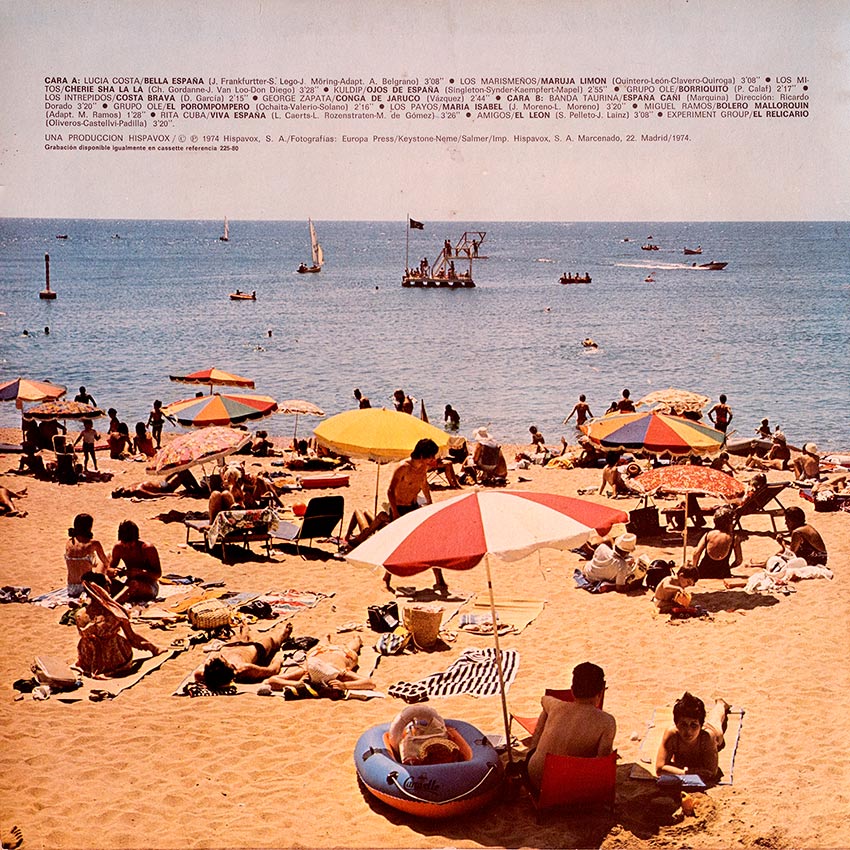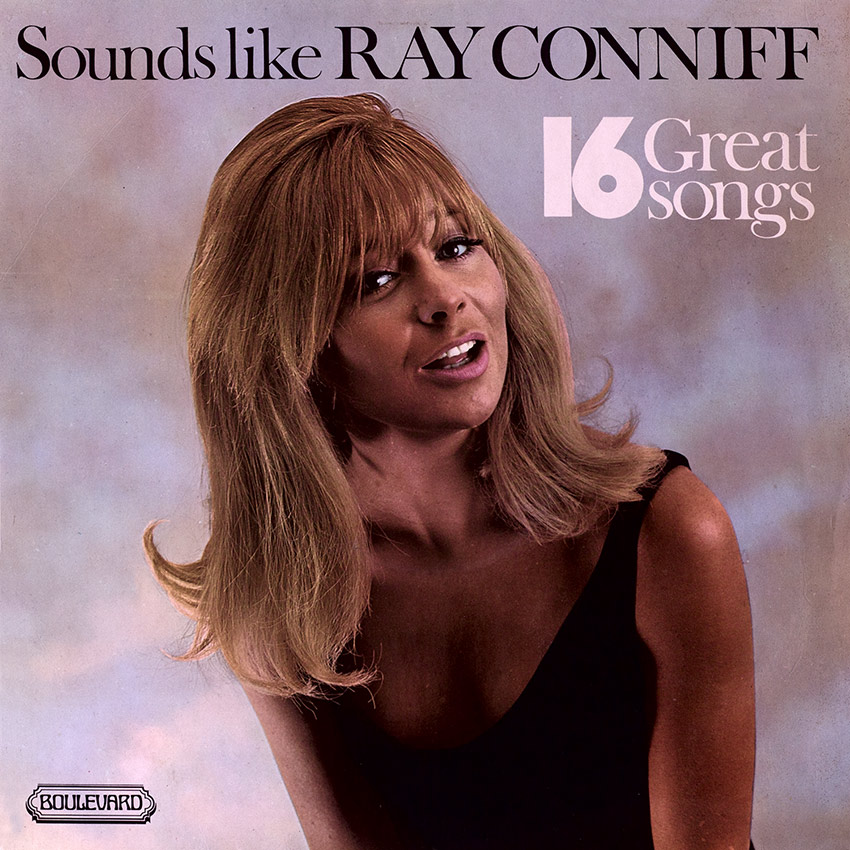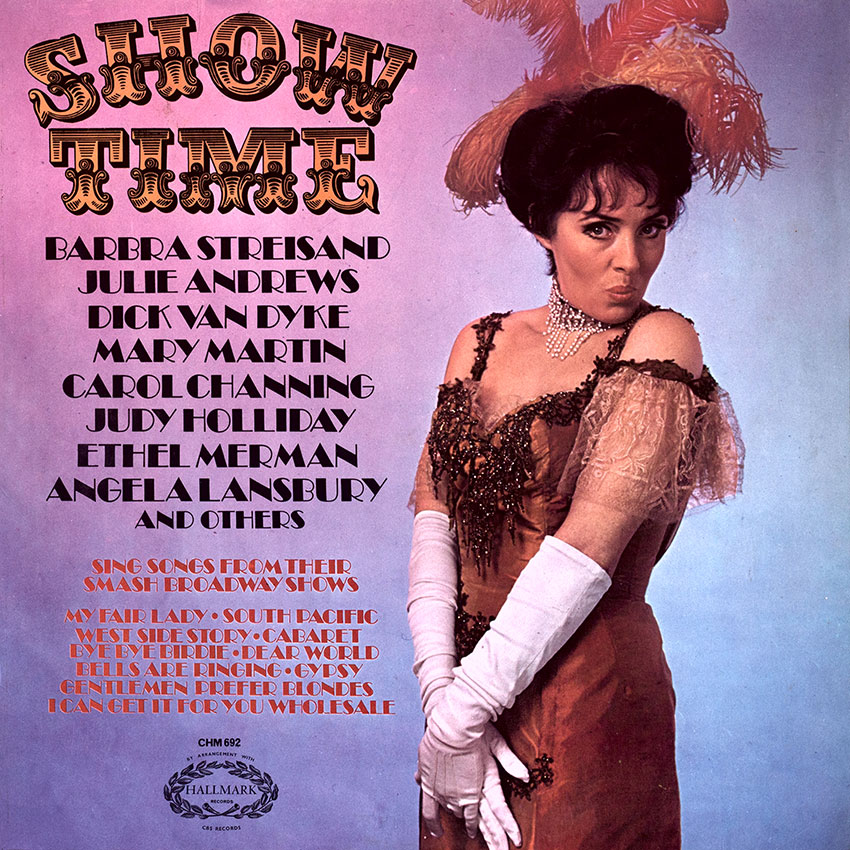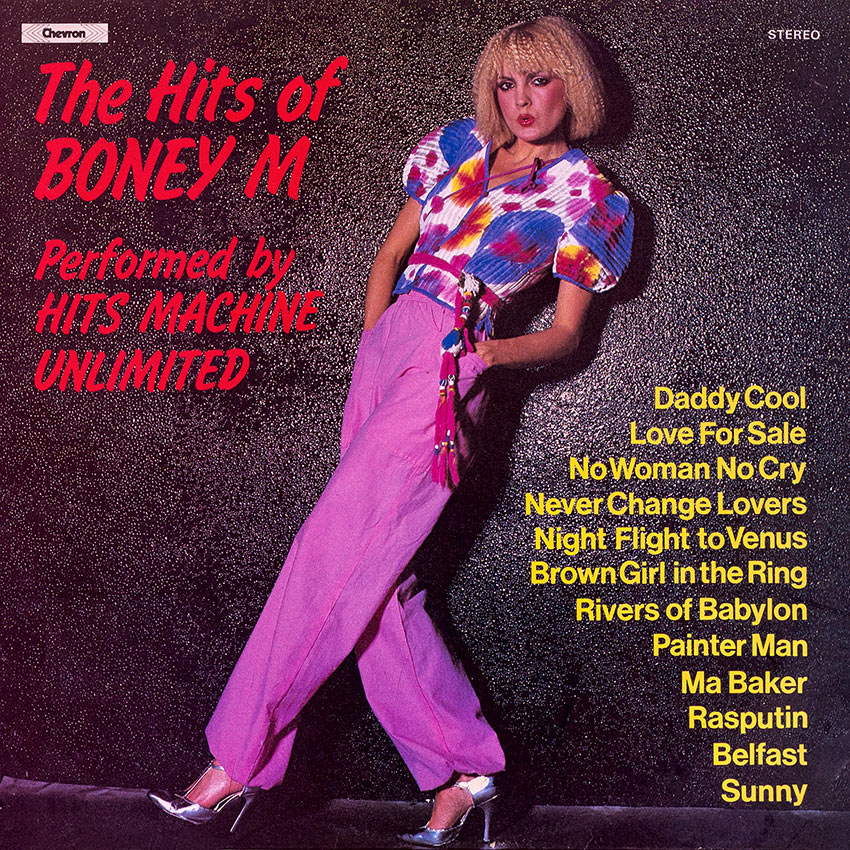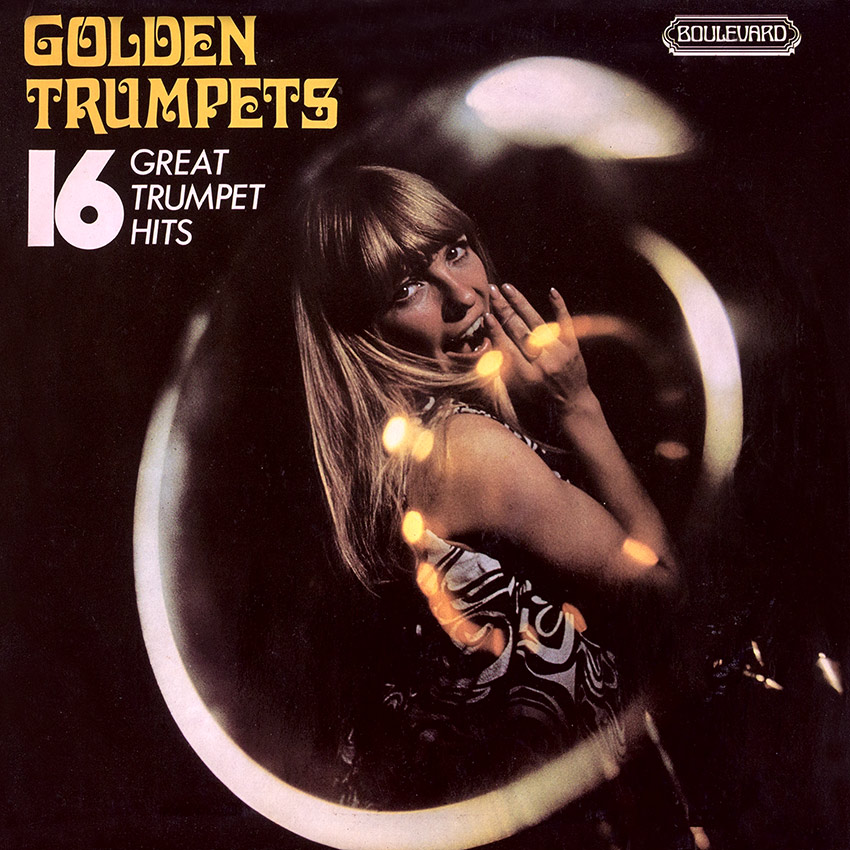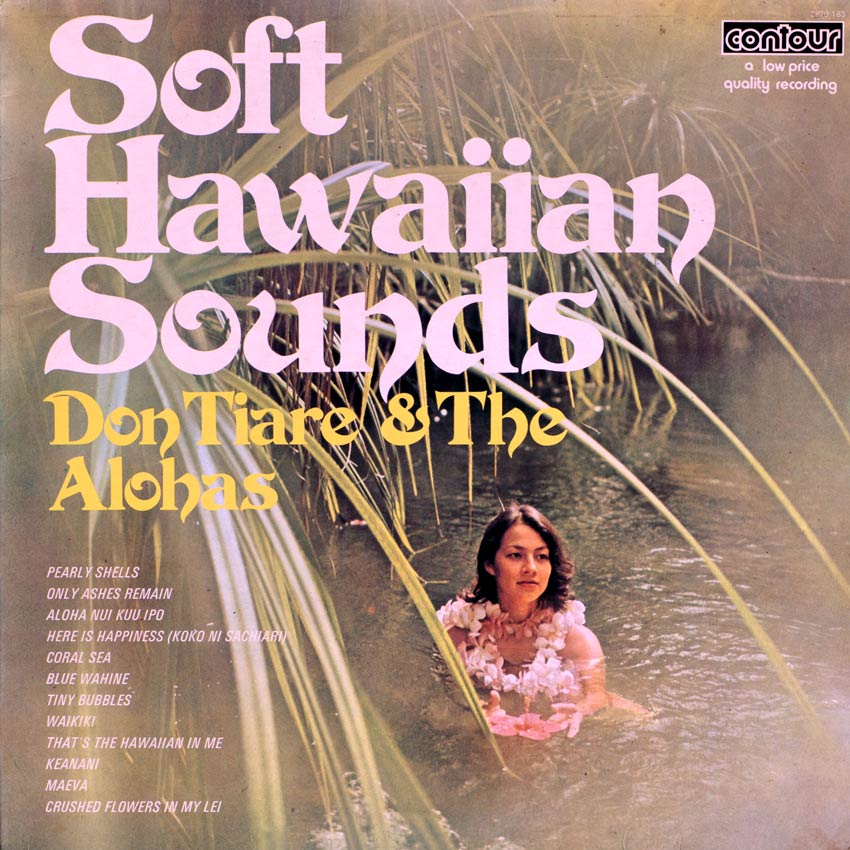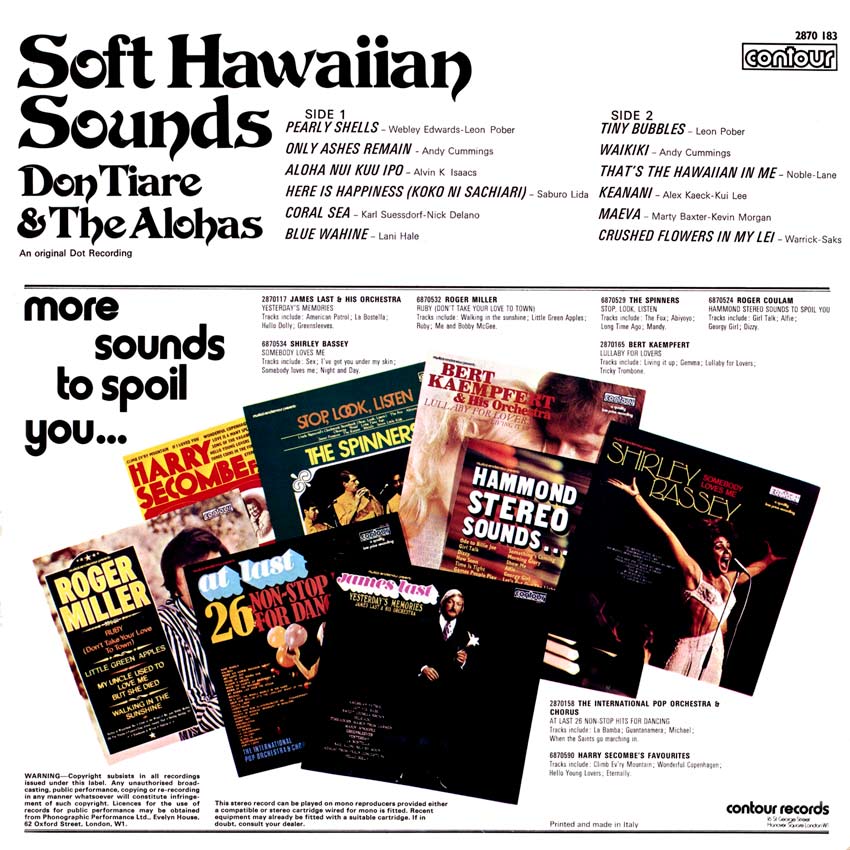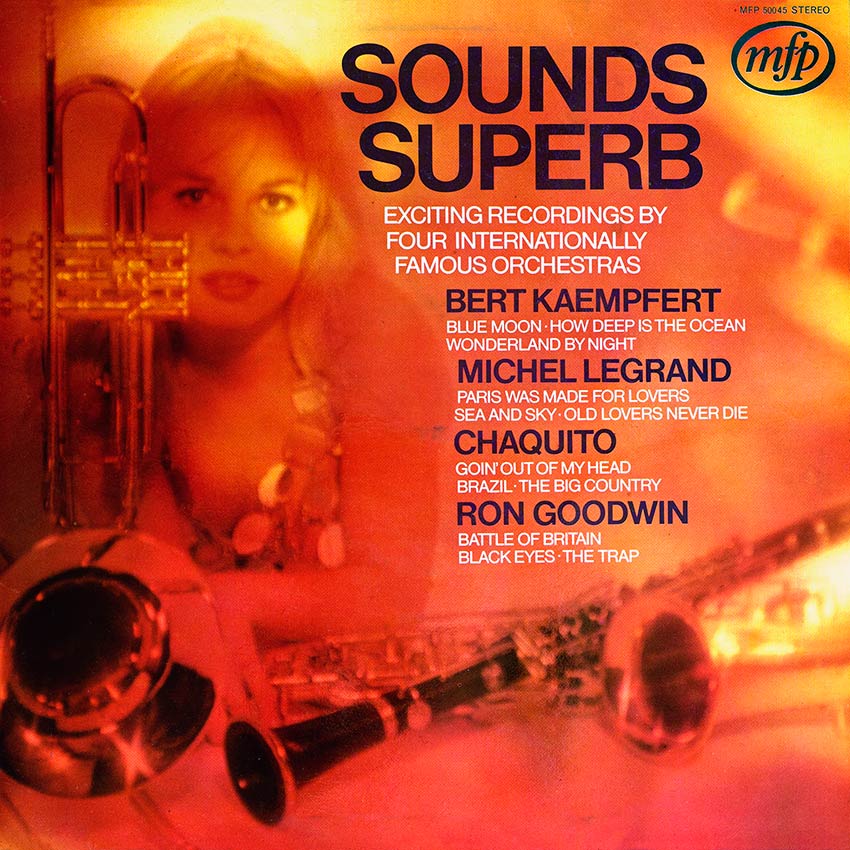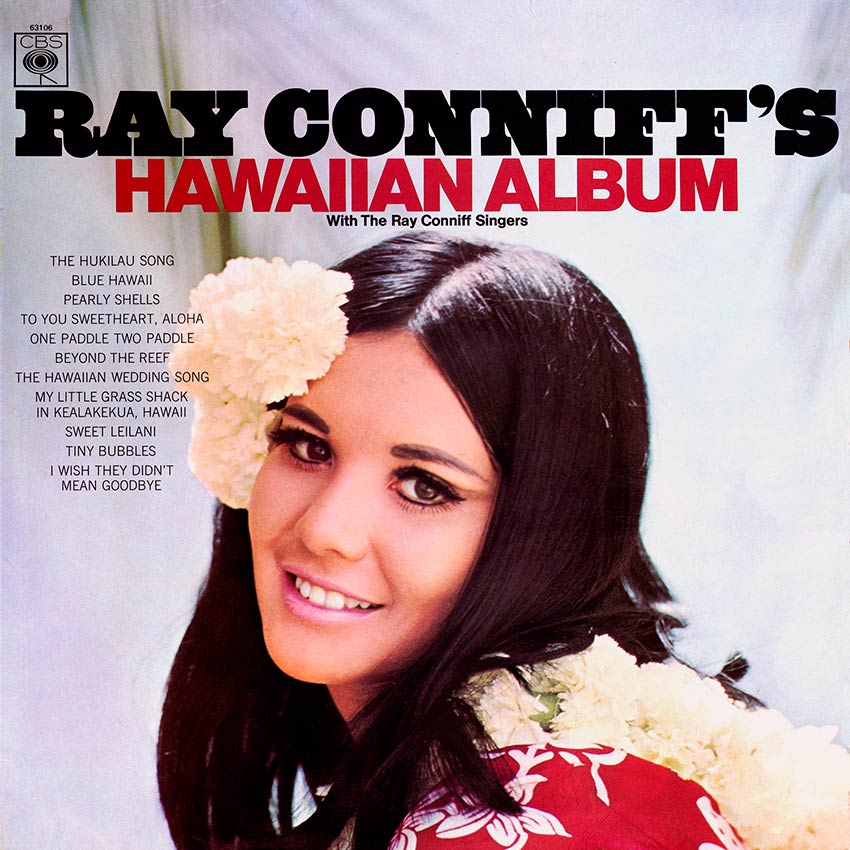Bella España Y Su Musica
Ian Raymond, His Chorus and Orchestra – Sounds Like Ray Conniff
Sleeve Notes:
Boulevard are proud to present an album by Ian Raymond, his chorus and orchestra in a tribute to the instantly identifiable sound of Ray Conniff, the tracks on this record are ideal for background music or dancing, and include the well known number Sweet Sue and a new Conniff style treatment of such favourites as Pennies From Heaven, Londonderry Air, On Top Of Old Smokey and One, Two, Button My Shoe. When you hear this album we are sure you will be delighted at the arrangements and will be looking forward to the next album.
© Art & Sound Ltd,1971

Label: Boulevard 4018
Showtime – Various Artists
Sleeve notes:
This album covers the coming of age of – as Variety coined it – the “legituner,” as well as many of the stars who have made musical comedy history in the last two decades or so, presented here in performances which helped gain them their initial renown.

Label: Hallmark CHM 692
Hits Machine Unlimited – Hits of Boney M
Sleeve notes:
During 1978 Boney M made their mark on the pop music charts with such songs as Rivers of Babylon, Brown Girl In The Ring and Rasputin. On this record, Hits Machine Unlimited pay their tribute to this super-group by performing twelve of their songs in the manner that Boney M themselves have made famous.

Label: Chevron CHVL 104
The Acapulco Brass – Golden Trumpets 16 Great Trumpet Hits
Sleeve Notes:
The trumpet featured in its appropriate setting can be one of the most stimulating and versatile instruments in any band. On this album this versatility is used to very pleasing effect by the Acapulco Brass. Here they present their new arrangements of such established favourites as Guantanamera, Down By The Riverside and When The Saints Go Marching In, coupled with new and original compositions which could well become Latin-American standards in their own right.
© Art & Sound Ltd, 1971

Label:Boulevard 4006
The Wilders – The Best of Burt Bacharach and Hal David
Sleeve Notes:
Burt Bacharach (his dad’s the syndicated columnist) is talented, youthful, versatile, hand-some, amiable, respected by his colleagues and married to a beautiful movie star (Angie Dickinson). He’s internationally known as a top notch composer, a skilled conductor and arranger, a creative producer of records and a singer-per-former with enough artistry and charisma to make it very big. He is already one of the largest talents on the contemporary music scene, and – despite his remarkable multiple successes – just about everybody seems to like him, even his very gifted lyric writing partner. Bacharach wrote his first song at twenty-one while studying music at McGill University in Montreal, and later – after a military career as a “concert pianist” in the Army in Korea – mooed into the “pop” world via successes as a pianist in top New York clubs. In Manhattan, he began to collaborate with Hal David and today Bacharach and David seem to write almost nothing but hits for stage(Promises, Promises), screen (What’s New Pussycat?, Alfie and Butch Cassidy – for instance) and disks (too numerous to list). They’ve won all the prizes and awards – Grammy, Oscar and Tony.
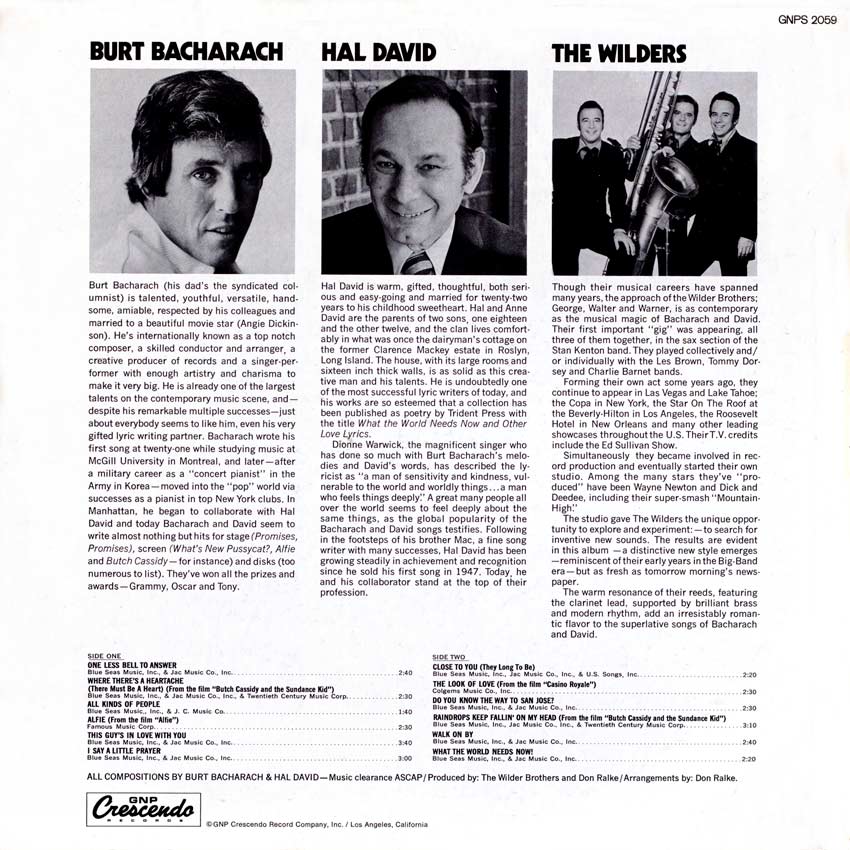
Label: GNP Crescendo GNPS 2059
Don Tiare & The Alohas – Soft Hawaiian Sounds
Sounds Superb – Various Artists (Chaquito, Ron Goodwin, Michel Legrand, Bert Kaempfert)
Sleeve Notes:
Sales of this record will benefit: THE NATIONAL KIDNEY RESEARCH FUND
Patron: H.R.H. Princess Alexandra, the Hon. Mrs. Angus Ogilvy. The National Kidney Research Fund was set up in 1967. Its purpose is to raise money and offer financial support to the country’s kidney specialists in their search for greater knowledge of the causes and effects of kidney diseases. The vital aim of this work is to find cures and treatments for these distressing diseases before an artificial kidney machine is required for the patient’s survival. For this, the Fund needs vast sums of money, and all those who buy this record are making a very worthwhile contribution to solving the problem – a problem which can affect any one of us during our lifetime.
If you would like to help further, please contact the Secretary of the Fund at 54 Paddington Street, London W1 M 3RQ. ‘Phone: 01-935 9019.
The National Kidney Research Fund is grateful to: Chaquito …. by permission of Phonogram Ltd. Ron Goodwin …. by permission of EMI Records, Michel Legrand by permission of RCA Records, Bert Kaempfert …. by permission of Polydor International G.m.b.H., and to Music for Pleasure Ltd. for donating their talent and services to this record. Co-ordinator on behalf of The National Kidney Research Fund Neal Arden.
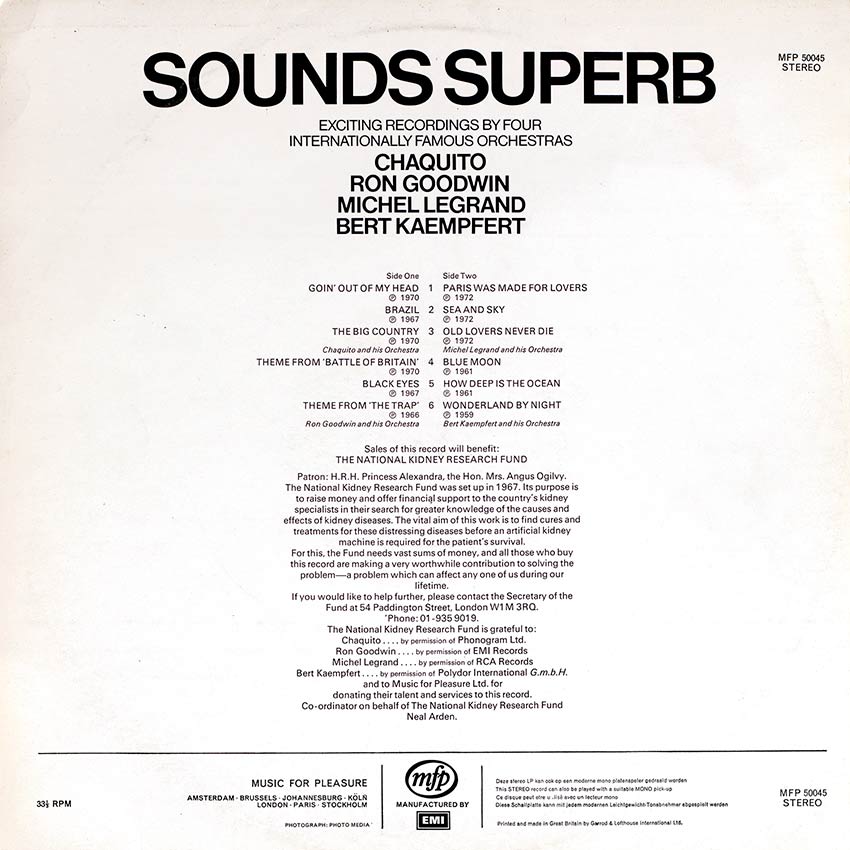
Label: MFP 50045
Photograph: Photo Media
Ray Conniff’s Hawaiian Album
Sleeve notes:
The above photo of Ray was taken as he was relaxing on the beach of the Kauai Surf Hotel on the garden island of Kauai, one of the Hawaiian outer islands.
Ray wrote all the arrangements for this album during his two-week stay at the Kauai Surf, and between arrangements the Hawaiians showed him how to strum the uke and taught him their own way of singing the Hawaiian songs, which in many cases is quite a bit different from the original.
“It was the most enjoyable two weeks work I’ve ever done in my whole career,” was Ray’s comment as he rejoined the Singers in Hollywood to record this album for your listening pleasure.

Label: CBS Records 63106
Cover Photo: Frank Bez

